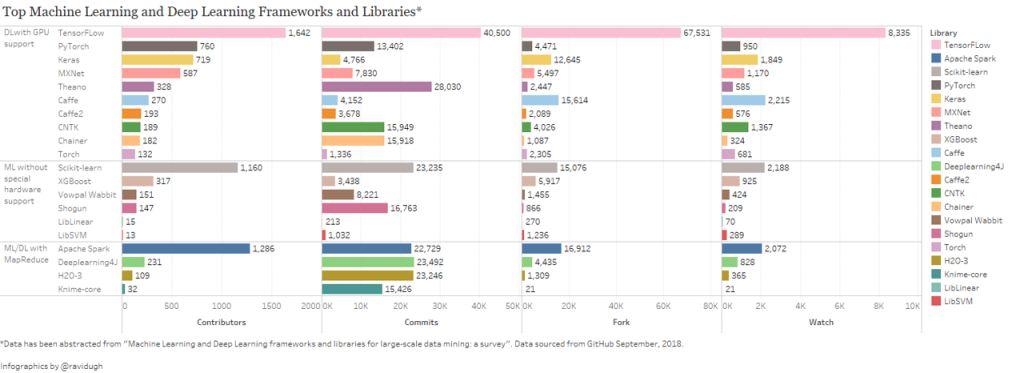Machine Learning frameworks and libraries are the tools that help develop and deploy machine learning models. The most popular ML frameworks are TensorFlow, Keras, and PyTorch. Please see Figure 1.

TensorFlow is an end-to-end open-source platform that was created with the goal of improving machine learning. The Google Brain team developed TensorFlow for internal Google use in research and production. TensorFlow has many features, providing extensive, open-source tools to researchers and developers. It has been used to do everything from predicting the stock market to labeling photos on social media platforms like Instagram.
Keras is designed with considerations for making the user’s experience as smooth and seamless as possible. For example, Keras has a simple API that offers a consistent interface, simple user actions for standard functions, and clear error messages that guide what to do. With Keras, one can build deep neural networks that enable powerful machine learning work with a high level of transparency.
PyTorch is an open-source machine learning framework based on the Torch library, used for applications such as computer vision and natural language processing. It’s mainly developed by Facebook’s AI Research lab (FAIR). PyTorch enables fast, flexible experimentation and efficient production through a user-friendly interface and the ecosystem of tools that comes with it.
Library vs. Framework
A library is a collection of code that can be used by other projects. It is an organized and structured set of code that can be accessed by other programmers. On the other hand, a framework is a set of libraries and tools used to build applications.
Frameworks provide a fast way for developers to create software products through a pre-defined structure and design. Libraries are collections of code that programmers can use in their projects to perform tasks such as machine learning or data analysis.
One way to tell the difference between a framework and a library is if it involves “Inversion of Control.” A library is a set of functions and routines used by other programs, so you’re in full control. But with a framework, you call methods directly from the framework to do things. Simply put, a library is a function of an application, and a framework is the skeleton of an application. Libraries define their own features, and frameworks define those of applications using them.
Reference:
TensorFlow – Wikipedia
GitHub – tensorflow/tensorflow: An Open Source Machine Learning Framework for Everyone
Keras – Wikipedia
Keras: the Python deep learning API – keras.io
PyTorch – Wikipedia
GitHub – pytorch/pytorch: Tensors and Dynamic neural networks in Python with strong GPU acceleration
Library vs. Framework? (programcreek.com)
